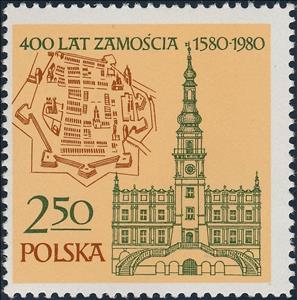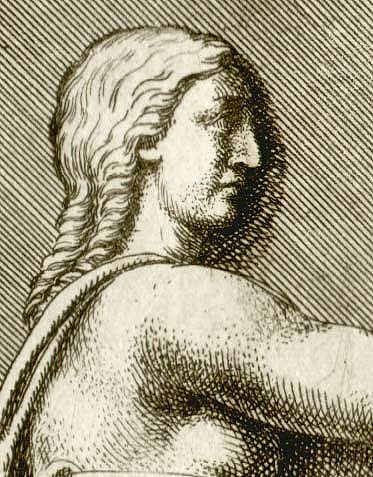Stamp: Map and Old Town Hall of Zamosc, 1591 (Poland 1980)
Map and Old Town Hall of Zamosc, 1591 (Poland 1980)
03 April (Poland ) within release Map and Old Town Hall of Zamosc, 1591 goes into circulation Stamp Map and Old Town Hall of Zamosc, 1591 face value 2.50 Polish złoty
| Stamp Map and Old Town Hall of Zamosc, 1591 in catalogues | |
|---|---|
| Polish Stamps Catalog (Fischer): | Pol: PL 2531 B1 |
Stamp is square format.
Growth on "A" in "POLSKA"Stamp Map and Old Town Hall of Zamosc, 1591 it reflects the thematic directions:
Architecture (Latin architectura, from the Greek ἀρχιτέκτων arkhitekton "architect", from ἀρχι- "chief" and τέκτων "builder") is both the process and the product of planning, designing, and constructing buildings and other physical structures. Architectural works, in the material form of buildings, are often perceived as cultural symbols and as works of art. Historical civilizations are often identified with their surviving architectural achievements.
The City Halls are part of a market complex designed by John Carrick in 1882, but the grand hall itself was designed by George Murray and opened in 1841. It was the first hall suitable for large gatherings and concerts to be built in the City and played host to the likes of Benjamin Disraeli, Charles Dickens, Hungarian patriot Lajos Kossuth and William Ewart Gladstone. From its early days it hosted a wide variety of popular and classical concerts including those by touring groups such as Louis-Antoine Jullien's celebrated London-based orchestra and Charles Halle's orchestra from Manchester. Glasgow's first regular orchestral subscription concert series, played by an orchestra managed by the Glasgow Choral Union, was given in the grand hall from 1874 until the opening of the much larger St Andrew's Hall in 1877. Arthur Sullivan was its conductor for two seasons from 1875 to 1877. The Old Fruitmarket directly adjoins the grand hall and was a functioning market until the 1970s after which it was in occasional use for jazz and folk music events. The adjoining buildings were home to bustling produce markets such as the fresh fruit and flower market and the cheese market.
Engraving is the practice of incising a design on a hard, usually flat surface by cutting grooves into it with a burin. The result may be a decorated object in itself, as when silver, gold, steel, or glass are engraved, or may provide an intaglio printing plate, of copper or another metal, for printing images on paper as prints or illustrations; these images are also called "engravings". Engraving is one of the oldest and most important techniques in printmaking. Wood engravings, a form of relief printing and stone engravings, such as petroglyphs, are not covered in this article.
A map is a symbolic depiction emphasizing relationships between elements of some space, such as objects, regions, or themes. Many maps are static, fixed to paper or some other durable medium, while others are dynamic or interactive. Although most commonly used to depict geography, maps may represent any space, real or imagined, without regard to context or scale, such as in brain mapping, DNA mapping, or computer network topology mapping. The space being mapped may be two dimensional, such as the surface of the earth, three dimensional, such as the interior of the earth, or even more abstract spaces of any dimension, such as arise in modeling phenomena having many independent variables. Although the earliest maps known are of the heavens, geographic maps of territory have a very long tradition and exist from ancient times. The word "map" comes from the medieval Latin Mappa mundi, wherein mappa meant napkin or cloth and mundi the world. Thus, "map" became the shortened term referring to a two-dimensional representation of the surface of the world.
The United Nations Educational, Scientific and Cultural Organization (UNESCO; pronounced /juːˈnɛskoʊ/) is a specialized agency of the United Nations (UN) with the aim of promoting world peace and security through international cooperation in education, arts, sciences and culture. It has 194 member states and 12 associate members,as well as partners in the non-governmental, intergovernmental and private sector. Headquartered in Paris, France, UNESCO has 53 regional field offices and 199 national commissions





